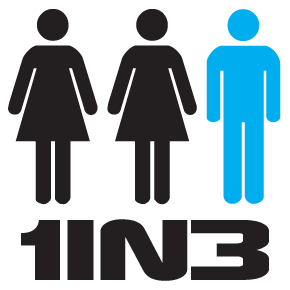Home violence not just at the hands of men | Toowoomba Chronicle

BRENDAN is a big man with a big heart.
And it's that big heart that almost cost him everything - his home, his belongings, his emotional health and his newborn daughter.
The council worker is slowly recovering from eight months of hell at the hands of a woman who declared her undying love for him.
Brendan hooked up with the woman last March.
She was a close friend the 28-year-old had known since high school.
The relationship came out of the blue for the physically fit, 185cm-tall, unassuming chap from NSW.
"We just sort of took a bit of a pot-shot I suppose and thought, 'well, why not see how we go in a relationship and play it from there'," he said.
"We had a fair bit in common, we got along as friends, and we thought it would work out all right."
About eight weeks after the relationship started, Brendan helped move his girlfriend from Queensland to NSW.
They set up a small house and began negotiating the path from friendship to love.
Within weeks, the cracks began to appear.
At first, his new partner started checking his phone calls and text messages.
Before long his newly pregnant spouse had banned him from seeing his parents.
She also hacked into his computer, raided his passwords and began trawling through his email, Facebook and bank account.
It wasn't long before the abuse started.
SIGN THE PETITION TO END DOMESTIC VIOLENCE
"There were little things that I didn't do right according to her - the way I did the washing up to the way I loaded the dishwasher and the way I was cooking food," Brendan said.
"It was just like a five-year-old having a tantrum - she'd yell and scream and tell me I was useless and I was going to be a s-t dad."
When the verbal attacks didn't have the desired impact, the violence began.
"She'd hit and punch and slap me in the head and face and the body," Brendan said.
"It was the intent of actually causing physical harm - my face was an easy target.
"I always felt that I was the cause of her violence."
His injuries included extensive bruising and bloody noses.
By November, Brendan decided enough was enough, walking away with nothing but the clothes he was wearing and his wallet.
Emotionally drained, he relied on the generosity of a colleague who helped him get back on his feet. He started to rebuild ties with his family and began seeing a psychologist to deal with the emotional fallout.
"I felt terrible. I started believing I was going to be a terrible dad, I was worthless - I had no self worth about anything," he said.
Brendan's little girl was born in December.
He has only seen her once and he has no idea where she is now.
"I'll be taking court action to get access to her," he said.
"I hope I will see her soon."
Male-specific domestic violence not so rare
BLOKES are tough. They don't cry. They don't ask for help. And they certainly don't get bashed up by their wives ... do they?
While there is no doubt women are more likely to suffer abuse at the hands of a partner, the roles are reversed in about one third of family violence cases in Australia.
It's a statistic men's rights campaigners hope to change.
The national One in Three Campaign, started by male and female researchers, academics, social workers and other health and domestic violence professionals in 2009, is shining the light on male victims.
The project's goal is to raise awareness of men as victims and lobby for male-specific domestic violence support services.
Project senior researcher Greg Andresen said 94% of domestic attacks on Australian men were committed by women.
Mr Andresen said many male victims refused to admit they were under attack because of the way society positioned men.
"One of the issues is the way men are raised - to be a real man you're supposed to be tough and strong and able to defend yourself and be independent," he said.
"To admit that someone in your home - particularly a woman - is abusing you really challenges that sense of self identity as a man. There's the idea that you're weak or wimpy or those sort of things.
"That certainly stops a lot of men from disclosing what happens."
Mr Andresen said a lack of male-specific support services also forced men to remain silent.
"They may look to get support but there are all these places that say 'women only'," he said.
"If we had a raft of services that men could access, more men would start coming forward."
Dr Deborah Walsh, of the University of Queensland School of Social Work and Human Services, said while female victims would struggle for years to make their relationship work and keep the family unit stable, male victims often called it a day once they realised there was no hope.
"Men who experience female violence are dreadfully traumatised - there's no question about that," Dr Walsh said.
"Women tend to invest more in trying to fix the relationship, whereas the men that I've worked with will try and fix the problems, but once it doesn't work that's it.
"Women tend to invest a lot more for a lot longer."
Mensline is the key Queensland resource for men suffering domestic violence and for male perpetrators to begin the journey back from the brink.
Telephone support worker Joe Cutrie said male victims were often very ashamed to admit they were victims.
"Often they just don't want to talk about it," Mr Cutrie said.
"It's very embarrassing for them - they just don't want to admit to the emotional trauma they are facing."
- APN NEWSDESK

